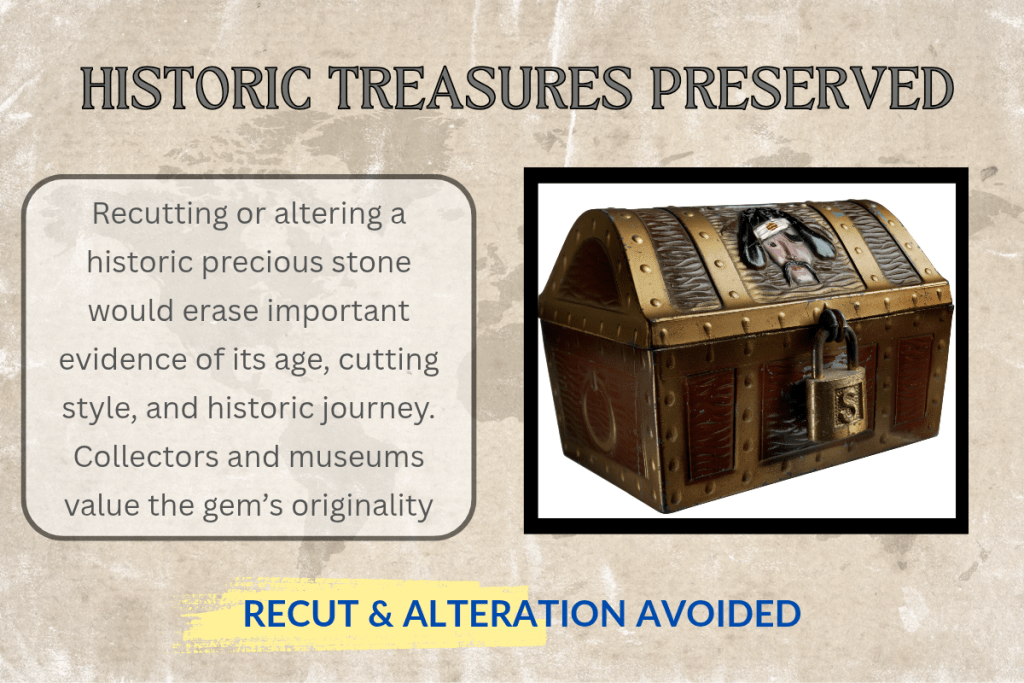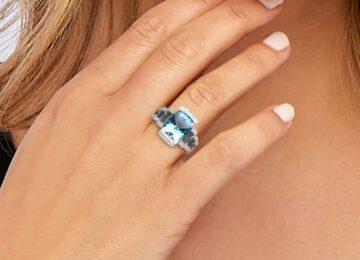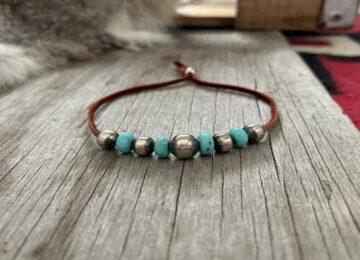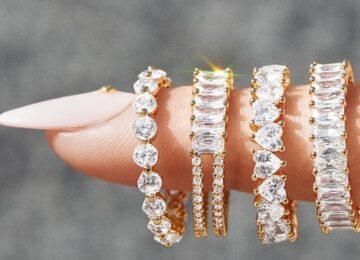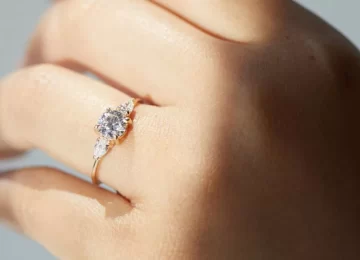Throughout history, some of the world’s most famous diamonds and gemstones have passed through royal treasuries, private collections, and museum vaults. These rare treasures are more than just sparkling jewels — they carry centuries of provenance, cultural meaning, and historic importance. Unlike modern gems, which may often be recut or re-polished to enhance their brilliance, most historic diamonds and gemstones are deliberately left in their original form. The priority is no longer beauty alone, but the preservation of heritage.
Preserving Legacy Over Appearance
The concept of recutting a gemstone is usually associated with improving its brilliance, symmetry, or commercial appeal. However, when it comes to a historic gem, even the tiniest alteration risks erasing part of its story. A unique cut from centuries ago may appear crude when compared to today’s precision cutting, but that old cut is precisely what ties the gem to its era. Collectors, museums, and auction houses recognize that once a stone is altered, its historical character diminishes. Therefore, the overwhelming consensus is to preserve these gems in their current form, allowing them to continue as witnesses of history.
Why Collectors Rarely Wear Them
In earlier centuries, royal families and nobility wore these rare diamonds and colored stones as status symbols. Today, however, it is increasingly rare to see even the wealthiest collectors or monarchs wearing historic gems. The reasons are practical. The stones are irreplaceable, and any damage or loss would be a blow not only in financial terms but also to cultural heritage. A scratch, chip, or accidental fall could diminish their value and erase centuries of history in a moment. The preference now is to preserve them under controlled conditions, rather than expose them to everyday wear.
Security and Insurance Concerns
Ownership of a historic diamond or gemstone brings with it extraordinary responsibility. High security is a given, with advanced vault systems, surveillance, and restricted access being standard practice. Moreover, insurance coverage for such assets is staggering, often running into millions of dollars annually. Insurance companies also place strict conditions on how and where such stones can be displayed or transported. As a result, many of these gems remain unseen by the public for years, surfacing only occasionally at exhibitions, prestigious auctions, or when a museum arranges a carefully planned display.
To mention a few examples the 184+ carat Jacob Diamond, which originated from the famed Golconda mines, is now secured in the Indian (government) treasury. The historic diamond will neither be recut nor, set in a piece of fine jewelry! Recent mentions of the Zanskar Crown sapphire being traced to a European collection – are drawing interest. The fine Kashmir blue sapphire, was once worn in a necklace by the Maharaja of Kashmir. With a hypothetically estimated weight of 170 to 220 carats, the Zanskar Crown is way too big to be set in modern jewelry.
The Zanskar Crown blue sapphire that has been rumored about in recent times, has an interesting story to narrate. The Kashmir sapphire was sold by Maharaja Pratap Singh of Kashmir, this was around the 1920s and the Maharaja, was believed to have arranged the sale to generate funds for his ambitious mission – to develop Kashmir on many fronts. There is no mention made about the opulent necklace that, showcased the Zanskar Crown as the center stone.
The Modern Role of Historic Gems
While they may no longer be worn regularly, historic diamonds and gemstones serve a greater purpose in the modern era. They educate and inspire, bridging the gap between the past and the present. Famous diamonds like the Koh-i-Noor or the Hope Diamond or, the scintillating Zanskar Crown Kashmir sapphire, are best preserved in their last known condition.
Precious stones like these, are not valued merely for carat weight or clarity, but for the empires, legends, and controversies that they have witnessed. These stones remind us that beauty and rarity can transcend time, evolving into symbols of identity, culture, and history.
Conclusion
The decision not to recut historic diamonds and gemstones reflects a growing recognition of their role as irreplaceable cultural assets. Their preservation under stringent security and insurance frameworks ensures that future generations can still admire their unaltered form. For today’s collectors and institutions, the true brilliance of these gems lies not in perfection of cut or polish, but in the priceless stories they continue to carry.


